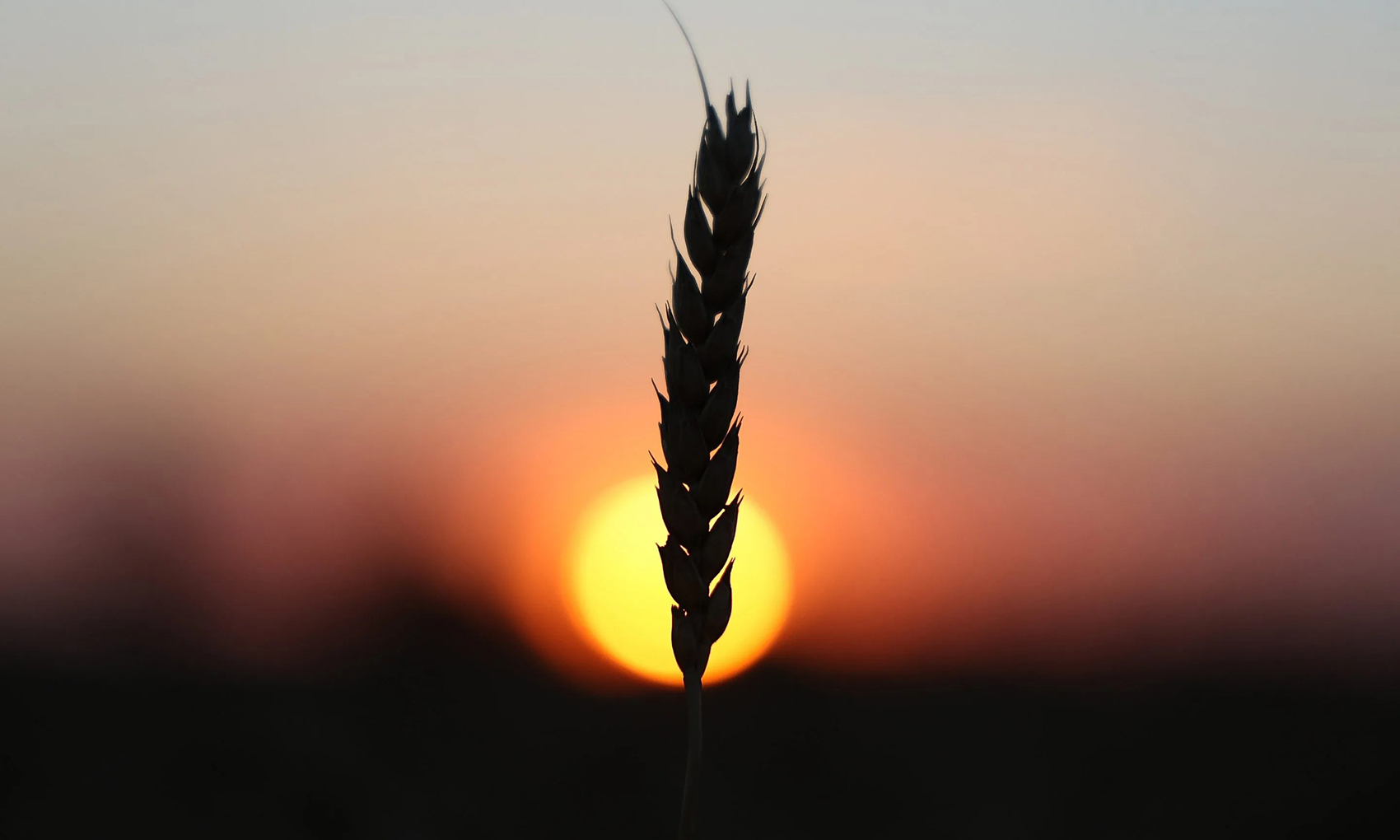
如今,人们几乎不可能避免这样的新闻报道:我们正处于一场毁灭性的粮食危机的边缘,我们只剩下几周的小麦供应了,以及如何运出滞留在乌克兰的约2000万吨粮食可能会决定全世界饥饿人口的命运。
这些故事引人注目,势必会引发囤积居奇、恐慌性抢购和以邻为壑的行为。这些故事也不准确。这些标题存在三大主要问题。
他们将可得性、可负担性与可用性混为一谈
我们有足够的食物养活每个人。当然,人们担心气候变化无常和悲惨的俄乌冲突带来的影响,但我们仍有充足的供应。
根据联合国粮食及农业组织(FAO)的数据,今年的谷物产量(包括主食小麦、玉米和大米)预测为27.845亿吨,低于去年的28亿吨,但仍高于2018-2020年27.114亿吨的平均水平。我们今年也生产了更多的肉类和牛奶。
问题在于可得性和可负担性——这是造成当今世界饥饿和饥荒的主要原因。在许多情况下,它们是政治决策的结果。
总部位于华盛顿特区的智库国际粮食政策研究所(IFPRI)的高级研究员戴维·拉博德(David Laborde)一直在跟踪粮食库存水平,他表示:“时至今日,世界上没有出现全球粮食短缺问题,但粮食却相当昂贵,而人们的工资还没有出现调整。”
他补充说:“主要问题是,由于冲突或出口限制,我们在运送粮食方面遇到问题。当然,恶劣的天气和缺乏肥料可能会导致明年出现供应问题。但我们还没有到那种地步。”
出口数据仅占其中的24.7%
国际贸易只占总产量的一小部分。世界各地生产的大部分食物都是供当地消费的。
当新闻报道说俄罗斯和乌克兰的小麦供应量加起来占全球小麦供应量的三分之一时,这只是一部分情况。去年,全球小麦产量为7.768亿吨,其中只有1.921亿吨(24.7%)用于出口。
作物科学家莎拉·泰伯(Sarah Taber)在一条疯传的推特(Twitter)帖子中指出了这一差异。她这样做是因为“每个人都在把自己推入与现实脱节的疯狂之中。”
泰伯指出:“在作者们开始大喊我们没有足够的小麦,我们都要饿死了之前,很少有作者真的去查‘现在有X量的小麦可供出口,而有Y量的需求’。”
对乌克兰局势的关注掩盖了我们粮食体系中存在的结构性问题
将当前的粮食危机归咎于俄罗斯要比承认我们的粮食体系功能失调容易得多。我们的粮食体系是不平等的、不健康的和破坏环境的。未能成功转变粮食体系是我们现在经历15年来第三次重大粮食危机的原因。
目前的粮食体系也效率非常低。世界上超过三分之一的谷物被用来喂养动物。为食用动物而饲养动物种植的谷物约占世界农田的83%,但食用动物提供的热量只占全球热量的18%。
世界银行估计,食品价格每上涨一个百分点,就会有1000万人陷入极端贫困。联合国警告称,目前有4900万人处于饥饿的边缘,这是前所未有的。
人们还担心气候变化、冲突和后新冠供应链问题加起来可能会导致未来出现粮食短缺问题。
然而,并不是每个人都在受苦。我参与的非营利性欧洲新闻机构Lighthouse Reports的一项调查发现,大量投资者资金涌入专业农业基金,其中大部分来自投机者,他们与小麦的实物生产或分销没有什么关系,但他们看到了快速赚钱的机会。
市场监管不力使这种投机成为可能,助长了我们在世界各地看到的粮食价格上涨问题,这对许多穷人来说是毁灭性的,因为他们收入的很大一部分用于购买食品。
我们现在迫切需要做的是确保食物能够到达那些需要但无法获得或无力支付的人手中,并防止囤积、过度投机和贸易限制。
我们应该不遗余力从结构上改善粮食体系。继续污染土壤和水道,破坏自然以增加粮食供应,或将饲料置于食物之上,这些做法都是极其短视的。(财富中文网)
Fortune.com上的评论文章仅代表作者个人观点,不代表《财富》杂志的观点和信念。
译者:中慧言-王芳
如今,人们几乎不可能避免这样的新闻报道:我们正处于一场毁灭性的粮食危机的边缘,我们只剩下几周的小麦供应了,以及如何运出滞留在乌克兰的约2000万吨粮食可能会决定全世界饥饿人口的命运。
这些故事引人注目,势必会引发囤积居奇、恐慌性抢购和以邻为壑的行为。这些故事也不准确。这些标题存在三大主要问题。
他们将可得性、可负担性与可用性混为一谈
我们有足够的食物养活每个人。当然,人们担心气候变化无常和悲惨的俄乌冲突带来的影响,但我们仍有充足的供应。
根据联合国粮食及农业组织(FAO)的数据,今年的谷物产量(包括主食小麦、玉米和大米)预测为27.845亿吨,低于去年的28亿吨,但仍高于2018-2020年27.114亿吨的平均水平。我们今年也生产了更多的肉类和牛奶。
问题在于可得性和可负担性——这是造成当今世界饥饿和饥荒的主要原因。在许多情况下,它们是政治决策的结果。
总部位于华盛顿特区的智库国际粮食政策研究所(IFPRI)的高级研究员戴维·拉博德(David Laborde)一直在跟踪粮食库存水平,他表示:“时至今日,世界上没有出现全球粮食短缺问题,但粮食却相当昂贵,而人们的工资还没有出现调整。”
他补充说:“主要问题是,由于冲突或出口限制,我们在运送粮食方面遇到问题。当然,恶劣的天气和缺乏肥料可能会导致明年出现供应问题。但我们还没有到那种地步。”
出口数据仅占其中的24.7%
国际贸易只占总产量的一小部分。世界各地生产的大部分食物都是供当地消费的。
当新闻报道说俄罗斯和乌克兰的小麦供应量加起来占全球小麦供应量的三分之一时,这只是一部分情况。去年,全球小麦产量为7.768亿吨,其中只有1.921亿吨(24.7%)用于出口。
作物科学家莎拉·泰伯(Sarah Taber)在一条疯传的推特(Twitter)帖子中指出了这一差异。她这样做是因为“每个人都在把自己推入与现实脱节的疯狂之中。”
泰伯指出:“在作者们开始大喊我们没有足够的小麦,我们都要饿死了之前,很少有作者真的去查‘现在有X量的小麦可供出口,而有Y量的需求’。”
对乌克兰局势的关注掩盖了我们粮食体系中存在的结构性问题
将当前的粮食危机归咎于俄罗斯要比承认我们的粮食体系功能失调容易得多。我们的粮食体系是不平等的、不健康的和破坏环境的。未能成功转变粮食体系是我们现在经历15年来第三次重大粮食危机的原因。
目前的粮食体系也效率非常低。世界上超过三分之一的谷物被用来喂养动物。为食用动物而饲养动物种植的谷物约占世界农田的83%,但食用动物提供的热量只占全球热量的18%。
世界银行估计,食品价格每上涨一个百分点,就会有1000万人陷入极端贫困。联合国警告称,目前有4900万人处于饥饿的边缘,这是前所未有的。
人们还担心气候变化、冲突和后新冠供应链问题加起来可能会导致未来出现粮食短缺问题。
然而,并不是每个人都在受苦。我参与的非营利性欧洲新闻机构Lighthouse Reports的一项调查发现,大量投资者资金涌入专业农业基金,其中大部分来自投机者,他们与小麦的实物生产或分销没有什么关系,但他们看到了快速赚钱的机会。
市场监管不力使这种投机成为可能,助长了我们在世界各地看到的粮食价格上涨问题,这对许多穷人来说是毁灭性的,因为他们收入的很大一部分用于购买食品。
我们现在迫切需要做的是确保食物能够到达那些需要但无法获得或无力支付的人手中,并防止囤积、过度投机和贸易限制。
我们应该不遗余力从结构上改善粮食体系。继续污染土壤和水道,破坏自然以增加粮食供应,或将饲料置于食物之上,这些做法都是极其短视的。(财富中文网)
Fortune.com上的评论文章仅代表作者个人观点,不代表《财富》杂志的观点和信念。
译者:中慧言-王芳
These days, it is almost impossible to avoid news stories about how we are on the brink of a devastating food crisis, how we only have a few weeks’ worth of wheat left, and how getting out some 20 million tons of grain stuck in Ukraine could determine the fate of the world’s hungry.
These stories are eye-catching and bound to induce hoarding, panic buying, and beggar-thy-neighbor behavior. They are also inaccurate.
There are three main problems with these headlines.
They conflate access and affordability with availability
We have enough food to feed everyone. Sure, there are concerns over impacts from erratic weather and fallout from this tragic war in Ukraine, but we still have sufficient supplies.
This year’s forecast for cereal production–which includes the staples wheat, maize, and rice–stands at 2,784.5 million tons, a drop from last year’s 2,800 million tons but still higher than the 2018-2020 average of 2,711.4 million tons, according to the United Nations’ Food and Agriculture Organization (FAO). We are producing more meat and milk this year too.
The issue is access and/or affordability–the main causes of hunger and starvation in today’s world. In many instances, they are a result of political decisions.
“As of today, the world has no global shortage of food, but food is quite expensive and people’s wages have not adjusted yet,” said David Laborde, a senior research fellow at the Washington D.C.-based think tank International Food Policy Research Institute (IFPRI), who has been tracking stock levels.
“The main issue is that we have problems moving this food around, either due to the war or export restrictions. Of course, bad weather and lack of fertilizers could lead to an availability problem next year. But we are not there yet,” he added.
The export figures only tell 24.7% of the story
What is traded internationally is a fraction of total production. Most of the food we produce around the world is consumed locally.
When news stories say Russia and Ukraine jointly account for a third of global wheat supply, that is only part of the picture. Last year, the world produced 776.8 million tonnes of wheat, of which only 192.1 million tonnes (24.7%) were exported.
Sarah Taber, a crop scientist, pointed out this difference in a Twitter thread that went viral. She did it because “everybody was just whipping themselves up into a frenzy that was disconnected from reality.”
“It is very rare to see any writer actually look up ‘there's X amount of wheat available for export right now, and Y amount of demand’ before they start hollering that there's not enough and we're all gonna die,” Taber noted.
The focus on Ukraine obscures structural problems in our food system
It is much easier to blame Russia for the current food crisis rather than acknowledge how dysfunctional our food systems are. They are unequal, unhealthy, and environmentally destructive. The failure to reform them is the reason we are now experiencing our third major food crisis in 15 years.
Current food systems are also highly inefficient. More than a third of the cereals we grow in the world are fed to animals. Raising animals for food takes up approximately 83% of the world’s farmland but accounts for only 18% of global calories.
The World Bank has estimated that for each percentage point increase in food prices, 10 million people are thrown into extreme poverty. The UN has warned that an unprecedented 49 million people are on the verge of starvation.
There are also real concerns a combination of climate change, conflict, and post-COVID-19 supply chain problems could lead to an availability issue in the future.
However, not everyone is suffering. An investigation by Lighthouse Reports, a non-profit European newsroom that I am a part of, found a huge influx of investor cash into specialist agricultural funds, much of it coming from speculators who have little to do with the physical production or distribution of wheat, but see an opportunity to make a quick buck.
This type of speculation, made possible by a history of failures to regulate the markets, is contributing to the food price rises we are seeing all over the world, which are devastating for many poor people, who spend a huge percentage of their incomes on food.
What we now urgently need to do is to make sure the food gets to those who need it but are unable to get it or pay for it and prevent hoarding, excessive speculation, and trade restrictions.
We also should not compromise on efforts to structurally improve our food systems. It is extremely short-sighted to continue polluting our soils and waterways, destroy nature to increase food supply, or prioritize feed over food.
The opinions expressed in Fortune.com commentary pieces are solely the views of their authors and do not reflect the opinions and beliefs of Fortune.






